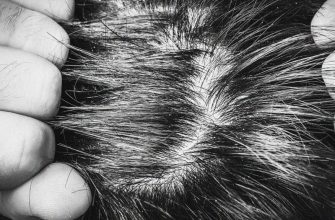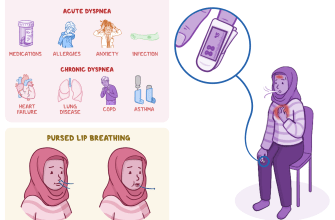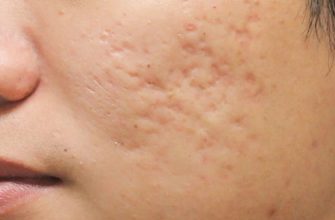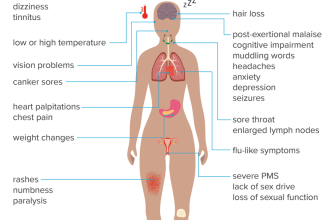Lymphedema is a chronic condition that occurs when there is a buildup of lymph fluid in the tissues, leading to swelling and discomfort. It most commonly affects the arms and legs, but can also occur in other parts of the body. Understanding the causes and available treatments for lymphedema is crucial for managing the condition effectively.
Lymphedema Causes
Lymphedema can be caused by various factors, including:
- Primary lymphedema: This type of lymphedema is usually caused by a congenital abnormality in the lymphatic system. It may develop at birth or later in life.
- Secondary lymphedema: This type of lymphedema is more common and occurs as a result of damage to the lymphatic system. Common causes include surgery, radiation therapy, infection, trauma, or cancer.
It is important to note that not everyone who undergoes surgery or radiation therapy will develop lymphedema. However, individuals who have had lymph nodes removed or damaged are at a higher risk.
Lymphedema Symptoms
The symptoms of lymphedema can vary from mild to severe and may include:
- Swelling in the affected limb or body part
- Feeling of heaviness or tightness in the affected area
- Restricted range of motion
- Aching or discomfort
- Recurring infections
If you experience any of these symptoms, it is important to consult with a healthcare professional for an accurate diagnosis and appropriate treatment.
Lymphedema Management
While there is no cure for lymphedema, proper management can help control the symptoms and prevent complications. Here are some strategies for managing lymphedema:
- Compression therapy: Wearing compression garments, such as sleeves or stockings, can help reduce swelling and improve lymphatic flow.
- Manual lymphatic drainage: This specialized massage technique can help move lymph fluid from the affected area to healthy lymph nodes.
- Exercise: Engaging in regular physical activity, especially exercises that promote muscle movement and circulation, can help manage lymphedema.
- Skin care: Keeping the skin clean and moisturized can help prevent infections and skin breakdown.
- Elevation: Elevating the affected limb above the heart level can help reduce swelling.
It is important to work closely with a healthcare professional or lymphedema therapist to develop an individualized management plan that suits your specific needs.
Lymphedema Prevention
While it may not be possible to prevent lymphedema entirely, there are steps you can take to reduce the risk of developing the condition or manage it effectively:
- Avoid trauma or injury to the affected limb
- Practice good hygiene and skin care
- Gradually increase physical activity and exercise
- Wear compression garments as recommended
- Manage weight and maintain a healthy lifestyle
By following these preventive measures, you can minimize the risk of developing lymphedema or reduce its impact on your daily life.
Lymphedema Therapy
Lymphedema therapy involves a combination of techniques to manage the condition effectively. These may include:
- Compression therapy: Using compression garments or bandages to reduce swelling and improve lymphatic flow.
- Manual lymphatic drainage: A specialized massage technique that helps move lymph fluid from the affected area to healthy lymph nodes.
- Exercise therapy: Engaging in specific exercises that promote lymphatic flow and muscle movement.
- Education and self-care: Learning about lymphedema management techniques and practicing self-care measures to prevent complications.
Lymphedema therapy is typically provided by trained therapists who specialize in the treatment of lymphatic disorders. It is important to follow the therapy plan recommended by your healthcare professional for optimal results.
Lymphedema Surgery
In some cases, surgery may be considered as a treatment option for lymphedema. Surgical interventions aim to improve lymphatic flow and reduce swelling. Common surgical procedures for lymphedema include:
- Lymphaticovenous anastomosis: This procedure involves connecting lymphatic vessels to nearby veins to bypass blocked or damaged lymphatic pathways.
- Vascularized lymph node transfer: In this procedure, healthy lymph nodes are transferred from one part of the body to the affected area to improve lymphatic drainage.
- Liposuction: Liposuction may be used to remove excess fat deposits in the affected area, reducing swelling and improving symptoms.
It is important to note that surgery is not suitable for everyone with lymphedema and should be considered on an individual basis. Consulting with a qualified surgeon is essential to determine the most appropriate treatment approach.
Lymphedema Support
Living with lymphedema can be challenging, both physically and emotionally. Seeking support from others who understand the condition can be beneficial. Here are some sources of lymphedema support:
- Support groups: Joining a support group can provide a platform to connect with others facing similar challenges and share experiences.
- Online communities: Participating in online forums or social media groups dedicated to lymphedema can offer support and valuable insights.
- Professional counseling: If you are struggling with the emotional impact of lymphedema, seeking counseling or therapy can help you cope better.
Remember, you are not alone in your journey with lymphedema, and reaching out for support can make a significant difference in your overall well-being.
In conclusion, lymphedema is a chronic condition that requires ongoing management. While there is no cure, various treatments and strategies can help control symptoms and improve quality of life. By understanding the causes, symptoms, and available treatment options, individuals with lymphedema can take proactive steps towards effective management and seek the support they need.








